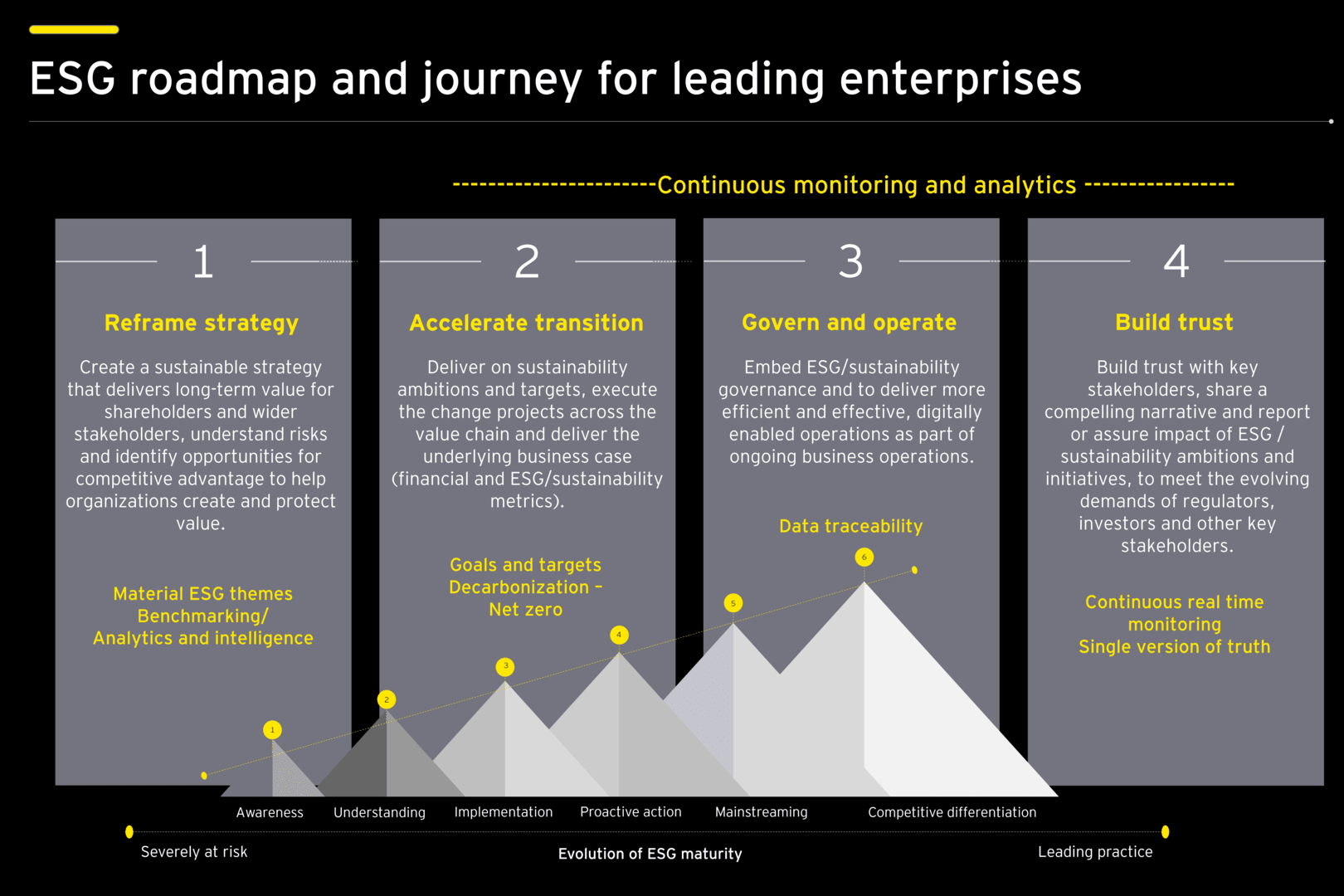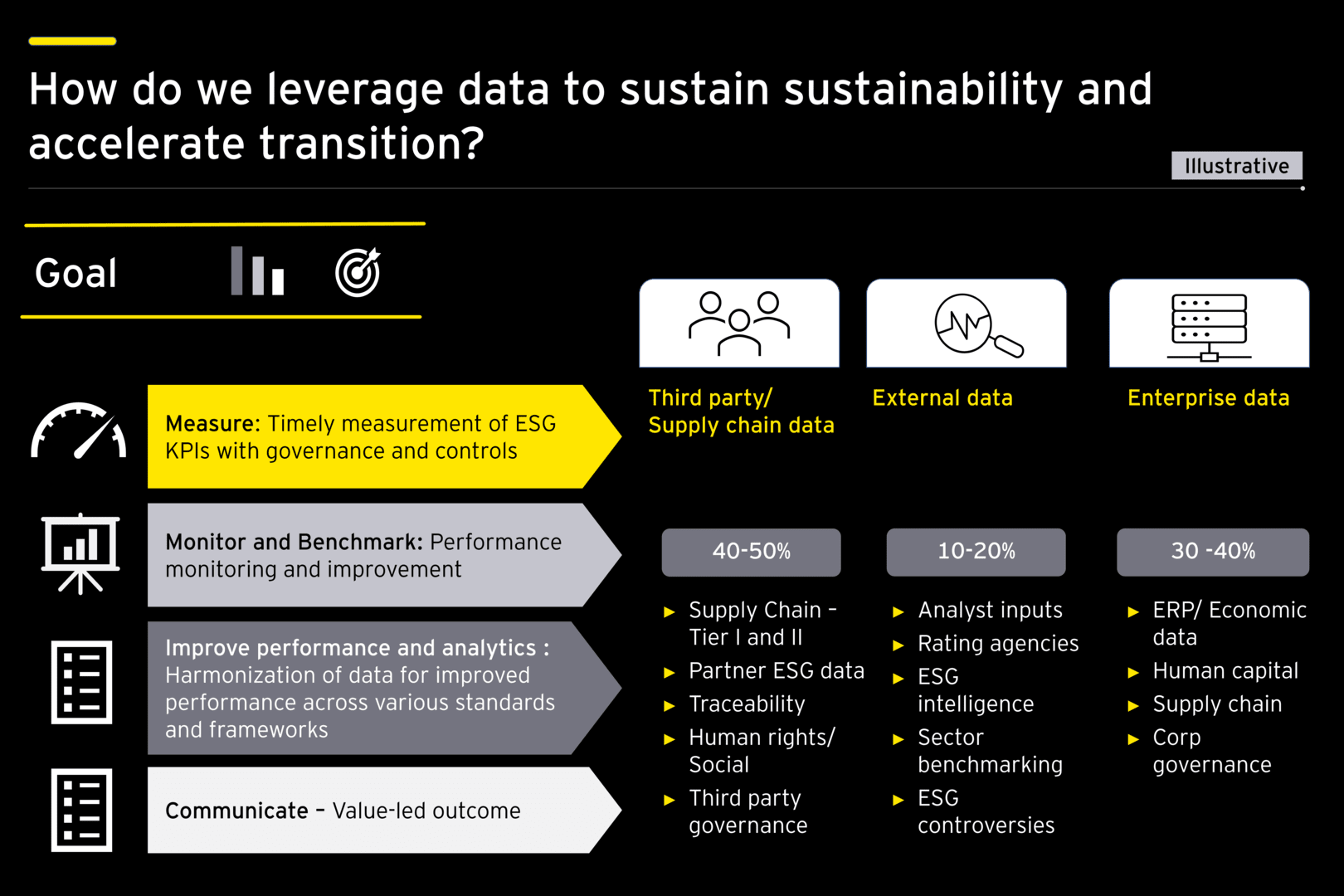Measuring ESG
For leading enterprises, ESG is a focused board agenda to create and protect value. It is important to have consistent and comparable scientific measurement of sustainability variables across all stakeholders so that there is a single version of truth with real or near-time performance analytics to create actionable insights.
Accordingly, an ESG framework’s purpose must be based on four pillars:
- Scientific measurement and base lining
- Benchmarking and continuous analytics and early warning signals
- Improving performance to enhance revenues, optimize cost and working capital
- Effectively communicate the impact and outcome across all stakeholders
To make crucial business decisions, data needs to function as both a telescope and a microscope. Additionally, there are three primary data models from an ESG perspective:
- Enterprise data that an organization emits across its business model: The main focus would be on the core business functions of buy, make, move, and sell, which are supplemented by processes like H2R (hire to retire), R2R (record to report), and governance processes.
- Third-party data across supply chain: Having third-party data across Environmental, Social and Governance metrics for key suppliers, business partners, distributors, outsourced service providers and customers – is key for traceability from cradle to cradle.
- External data that the outside environment is creating: Various sources such as consumer sentiment analysis, investor/analyst inputs, ESG controversies, competitor intelligence, sector benchmarking, and corporate social data are generating information that can be used for intelligence
Third-party and external intelligence is key to differentiating an enterprise’s ESG transformation journey.
Not just organizations, consumer and employee perspectives have also changed over time and various other stakeholders, including investors and governments, want higher accountability from organizations.
Our recent analysis of EY’s Future Consumer Index Survey indicates that there is a growing demand among customers for sustainable products and services. As many as 43% global consumers said they want to buy more from such organizations and are willing to pay more for certain categories.
More importantly, 64% of consumers said they are willing to change their behavior to help the environment and society. At the same time, investors want consistent and comparable ESG performance. This has, in fact, become critical to assessing by leaders in this space.
To build internal and external accountability, organizations on a sustainability journey must keep in sight three points of reference.
- The first is the current position. The organization needs to benchmark itself against peers to understand the current maturity
- The second point of reference is destination, which will determine the goals and the ambitions
- The third is to design a plan that will enable the organization to reach its target with periodic milestones
Role of digitization
With ESG becoming a mega-trend, there has been a significant increase in performance measurement, monitoring, and benchmarking data. In India, the Business Responsibility and Sustainability Report (BRSR) framework is an important step toward reporting on non-financial measures.
HUL has set up digital capabilities to ensure robust non-financial reporting and drive performance cadence in the organization. This also becomes a determinant in resource allocation, which is of significance given the very long-term nature of the sustainability commitments.





